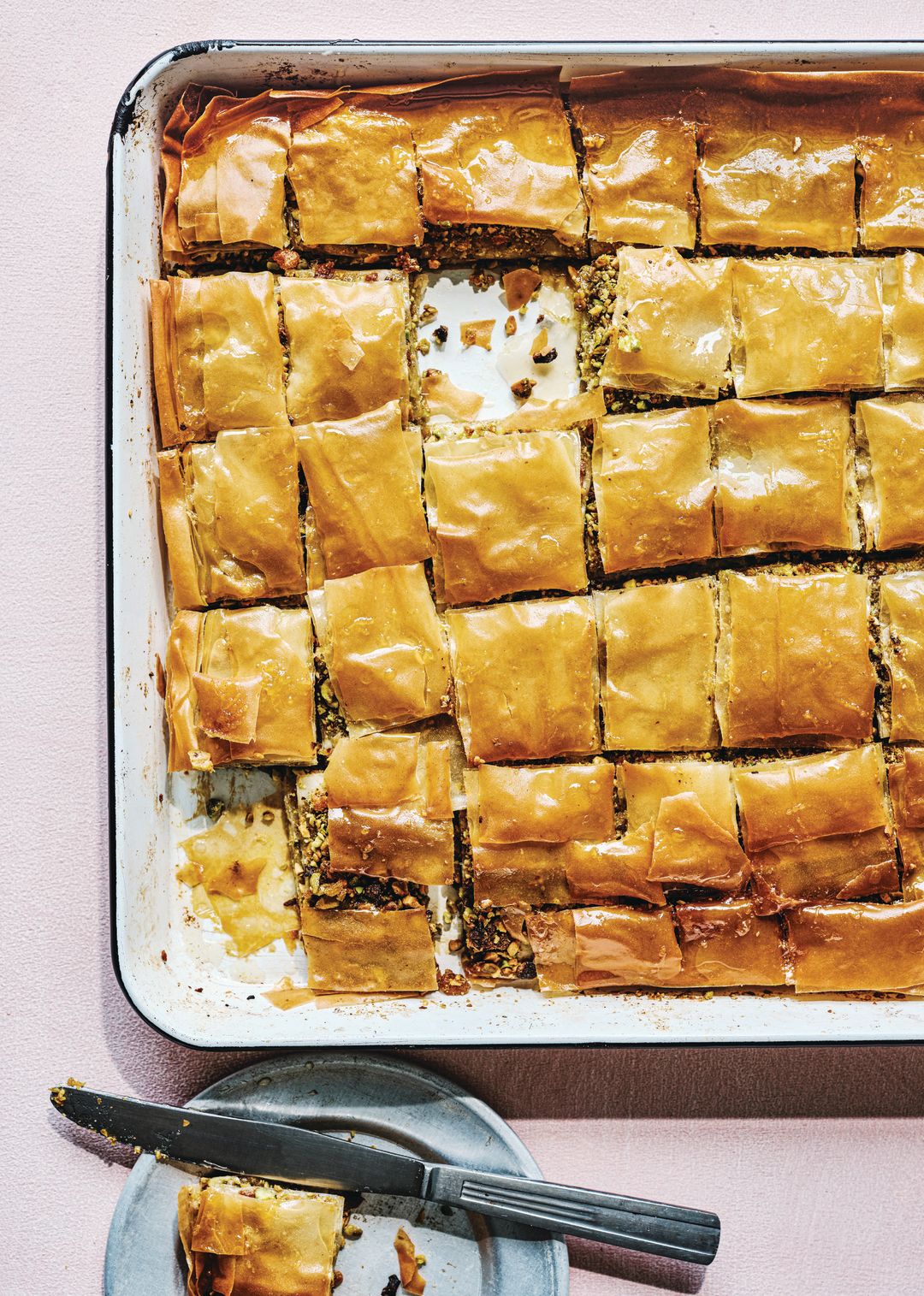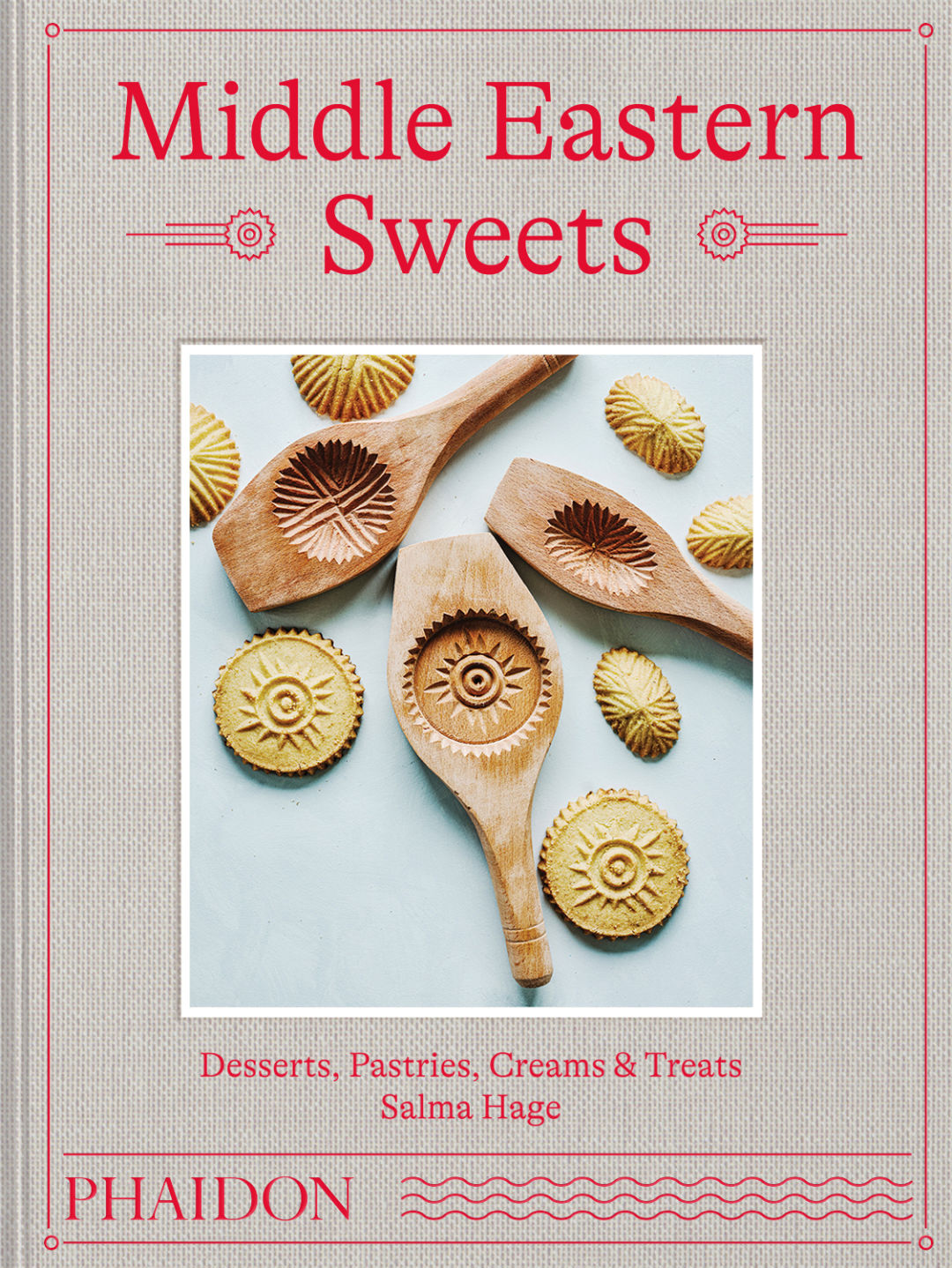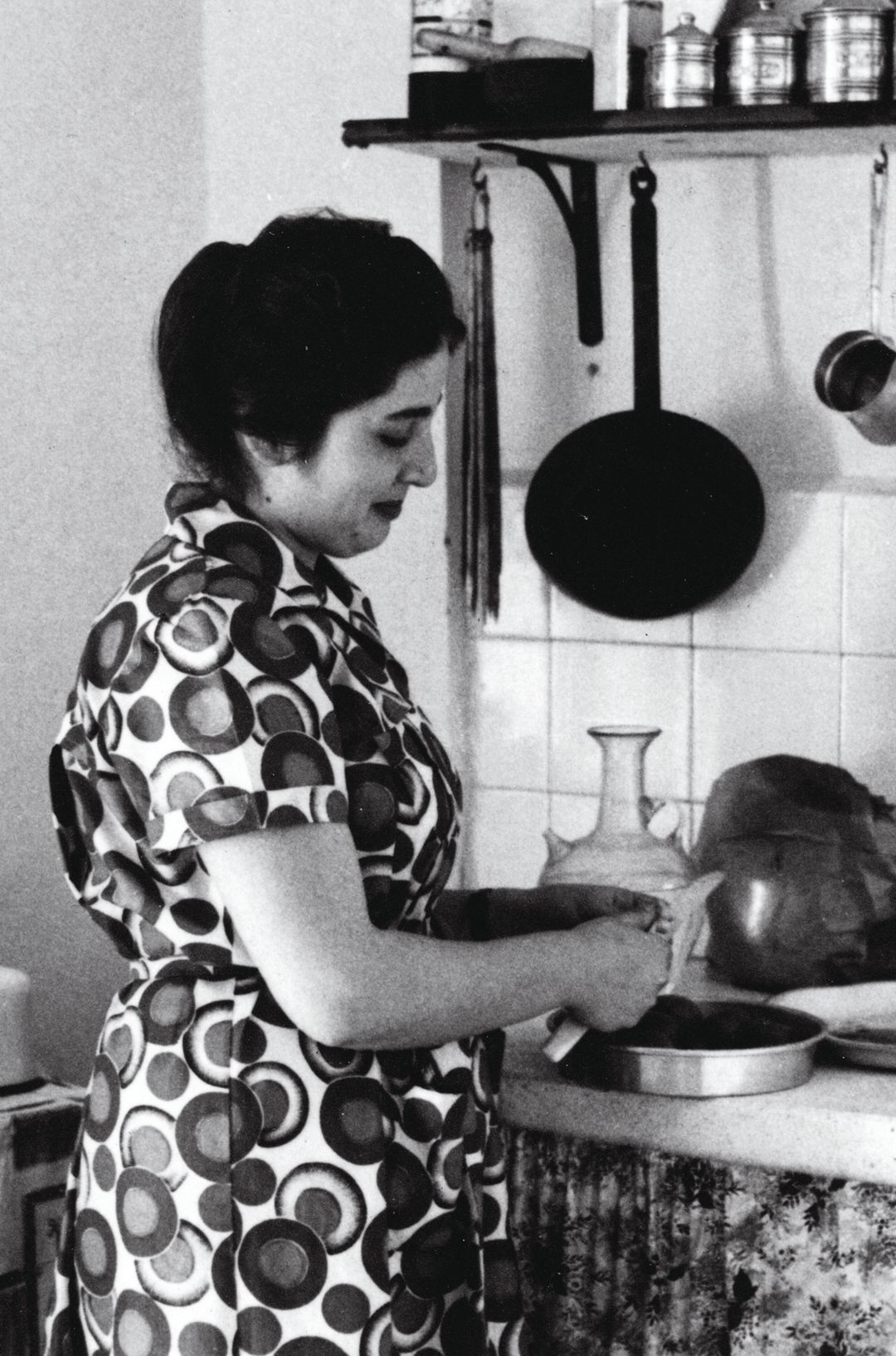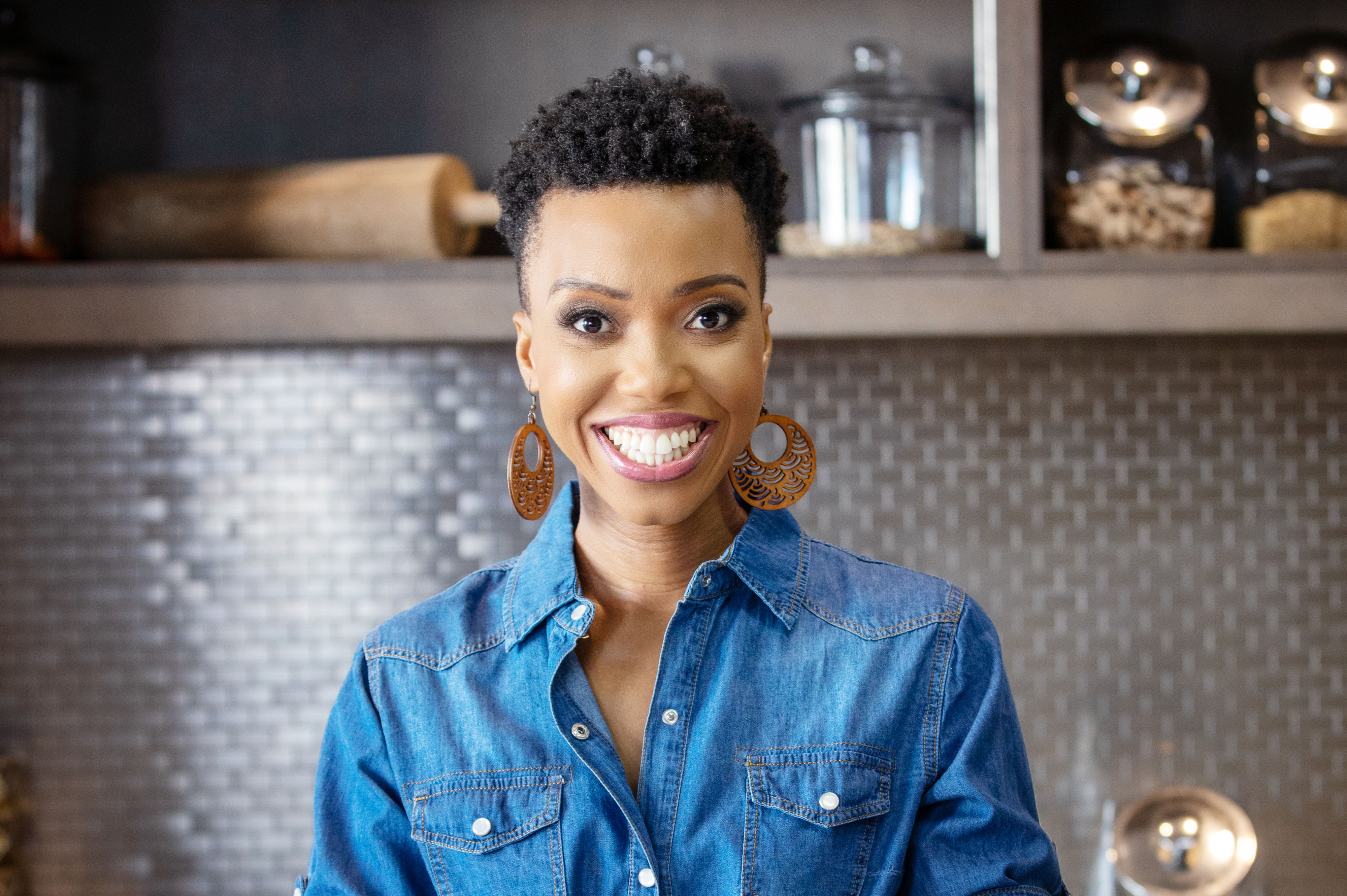This New Cookbook Is All About Middle Eastern Desserts

Salma Hage's pistachio and apricot baklava, which Hage calls "one of the iconic sweet dishes of the Middle East."
Image: Liz and Max Haarala Hamilton
Salma Hage's new cookbook will have you scrambling to stock up on flour, sugar and butter, as well as cardamom, rosewater, orange blossom water, saffron, pistachios, tahini and much else.
Hage may come from Lebanon, but the book, Middle Eastern Sweets: Desserts, Pastries, Creams & Treats, includes sweet recipes gathered from around the region—from the United Arab Emirates to Egypt and Turkey. It also ranges from morning until night, detailing how to make cookies and shortbreads that go great with coffee or tea, as well as more elaborate cakes with which you can wow your dinner party guests.

The cover of Salma Hage's Middle Eastern Sweets: Desserts, Pastries, Creams & Treats.
Image: Courtesy Photo
Hage previously authored The Lebanese Cookbook, The Middle Eastern Vegetarian Cookbook and The Mezze Cookbook: Sharing Plates From the Middle East, and lives in London. She recently answered questions about her new book from Sarasota Magazine via email. Her answers have been lightly edited for clarity.
Tell us about the origins of the book and what prompted you to write it.
Much has been written about the savory food of the Middle East in recent years, with za’atar and tahini available on most supermarket shelves, but my impression is that there is still an air of mystery around Middle Eastern desserts, and Western cooks are often nervous to try making them. I wanted to show that they’re often really simple and easy from start to finish. As someone with a naturally sweet tooth, this book was a natural next step for me.

Salma Hage in Tripoli, Lebanon, in 1960.
Image: Heni Hage
The book showcases desserts from around the Middle East. Did you travel to research it? Or is it based on dishes you've tasted throughout your career?
The recipes are mostly inspired by my life in Lebanon and London, which is a melting pot of different cultures. I wanted to showcase some of the regional specialities in the book, such as my recipe for pistachio katmer, a filo and ground nut dessert that is served at wedding breakfasts in Gaziantep, Turkey, as a sweet start to married life for the bride and groom. I also believe that food is always evolving, and so lots of the recipes are adapted from techniques I learned as a young woman in Lebanon with ingredients more readily available in my adopted home of London.
You write that you felt "conflicted" about writing a dessert book because of the negative health effects that sugar can have. When you write recipes, is it difficult to strike a balance between making a dish that is nutritious and one that is delicious?
I wanted to write a book that showcased some of my favorite sweet celebration dishes. While I don’t think that we should all eat desserts all of the time, life is all about balance, and a sweet end to a meal always makes me smile.
For people who are new to baking or making desserts, is there a particular recipe that you recommend they start with?
Everyone should try making baklava once in their lives. It’s so much easier to make than it looks and tastes, and is one of the iconic sweet dishes of the Middle East.
Many of your recipes are marked "vegan," "dairy free," "nut free" or "gluten free." Did you have to adapt them much to fit those categories? Or were they already naturally gluten-free, etc.?
There’s such a wide variety of food in the Middle East, and many existing recipes naturally fall into these categories, because they were originally created to enjoy during or after periods of religious fasting, or symbolic celebrations. Hopefully, they’re useful to anyone who’s cooking for a group with different dietary needs, as so many of us often are.



